Diablo 3 Review
Diablo is the most iconic hack and slash RPG franchise of all time. The original, released in 1996, took heroes through catacombs beneath the town of Tristram. Players descended into the darkest recesses of the cathedral to face the Lord of Terror himself. The isometric view was populated with evil creatures, random dungeons and a range of awesome spells. Diablo 2 and its expansion were released at the turn of the century. They expanded on the original, offering more monsters, items, locations and some fantastic pre-rendered cut scenes. The longevity enjoyed by both games is a testament to their quality. Diablo 3 holds many of the characteristics that have earned the series so much admiration.
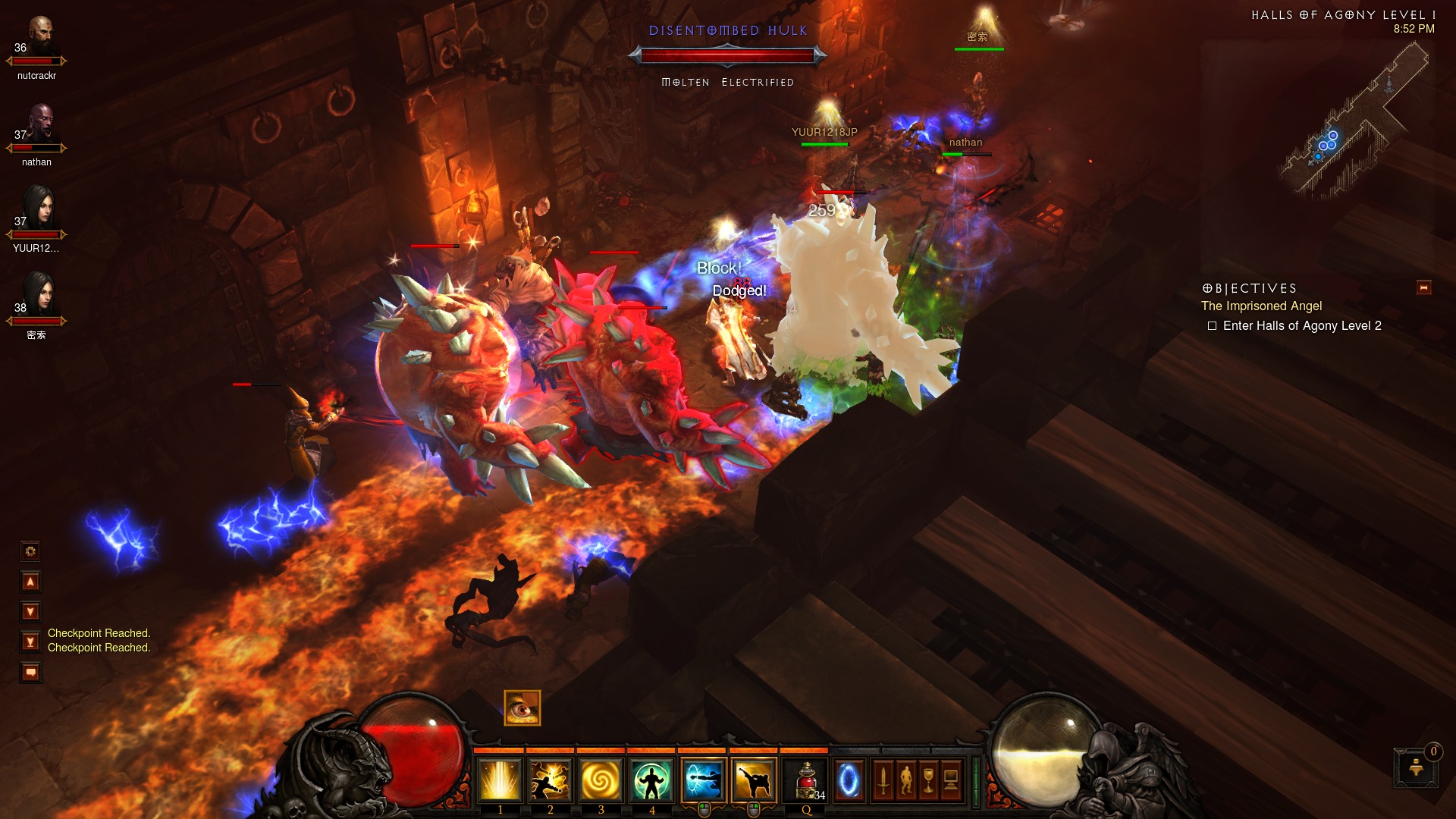
Diablo 3 is dungeons, monsters and lots of fire
Diablo 3 has been in development for a long time and it draws directly from the previous games. The first three acts follow very closely to Diablo 2 in terms of structure. Familiar faces, locations and characters return, including Deckard Cain and the cursed town of Tristram. The Diablo games have always been addictive with constant clicking through randomized levels. The sequel is no exception and players can easily lose hours by clearing dungeons in search of treasure. The constant potential to upgrade weapons and armor compels you to clear one more area. Amazing monsters provide refreshing encounters when you visit the different lands.
Skeletons, zombies, goat men, spiders, fallen and bats are just some of the returning creatures. New inclusions, like the obese Grotesque and the gigantic Wood Wraith, are superbly designed and fun to fight. Series fans will get a good dose of nostalgia when they meet returning foes in the later acts. The variety of interesting monsters is probably the most appealing and faithful aspect of this sequel. Killing these creatures is just as fun as collecting the rare treasures they drop. To eliminate the wide range of denizens you use a skill system that has changed significantly from its predecessors
Instead of investing points into a tree based system, you are given skills as you level up. You can use any of the unlocked skills at any time after a brief delay. These skills are unique to each character class and there are no scrolls to provide additional magic support. Skills receive alternative modifications via level based runes. You can continue using early skills because damage is calculated from the weapons and items you wield. Equipment is more important and character customisation is transferred from skill allocation to item selection and modification.
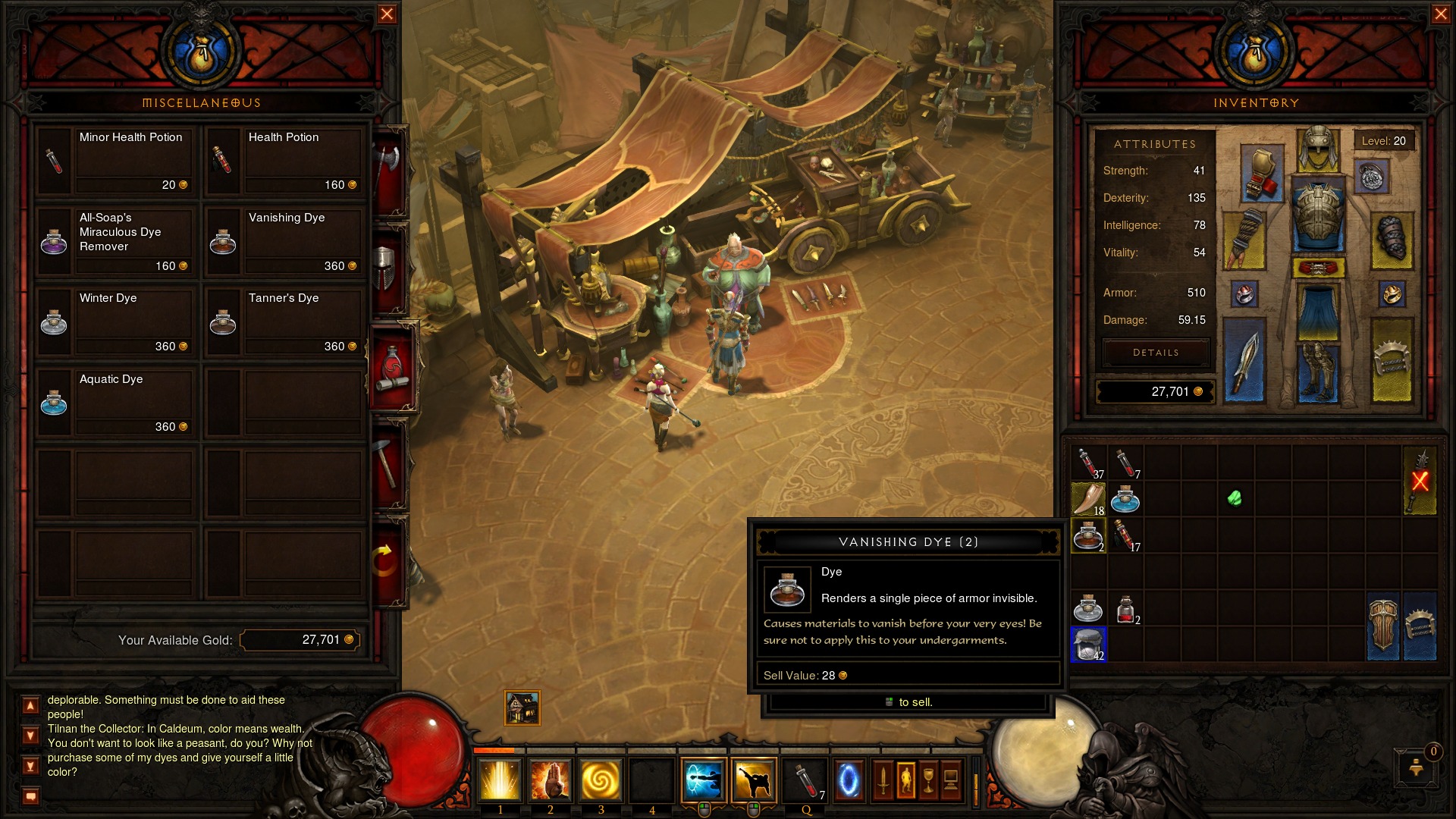
Don’t like your armor? Recolor it or make it disappear!
You can use the services of a blacksmith and a gem dealer to produce or enhance items. These characters can be trained (paid) to unlock more powerful items and also salvage components. The blacksmith offered useful items for great prices once trained. Gems can be combined just like they could with the Horadric Cube in Diablo 2. Gems increase attributes depending on which item they are placed in. They may improve damage, health or even gold drop rate. The item progression system is fantastic because you always feel like your next upgrade is just minutes away through a drop or upgrade. Changes from the health system in Diablo 2 shift the focus during combat.
Health orbs, dropped by monsters, provide a large portion of your health regeneration in this sequel. There are no mana potions and health vials have huge cool down times so they provide a single heal during most battles. You will never need to buy health potions when you go back to town on Normal difficulty. No need to sort belt slots so you are ready to heal when the time comes. Larger monsters just need damage before they drop a juicy health orb for you to gobble up. Rather than pressing a button to heal, you stand toe-to-toe and absorb health as you perform powerful attacks. You are rewarded for being efficient in combat and will still need to dodge certain attacks. It brings the focus back to the skill set and takes away the need to constantly consume health potions.
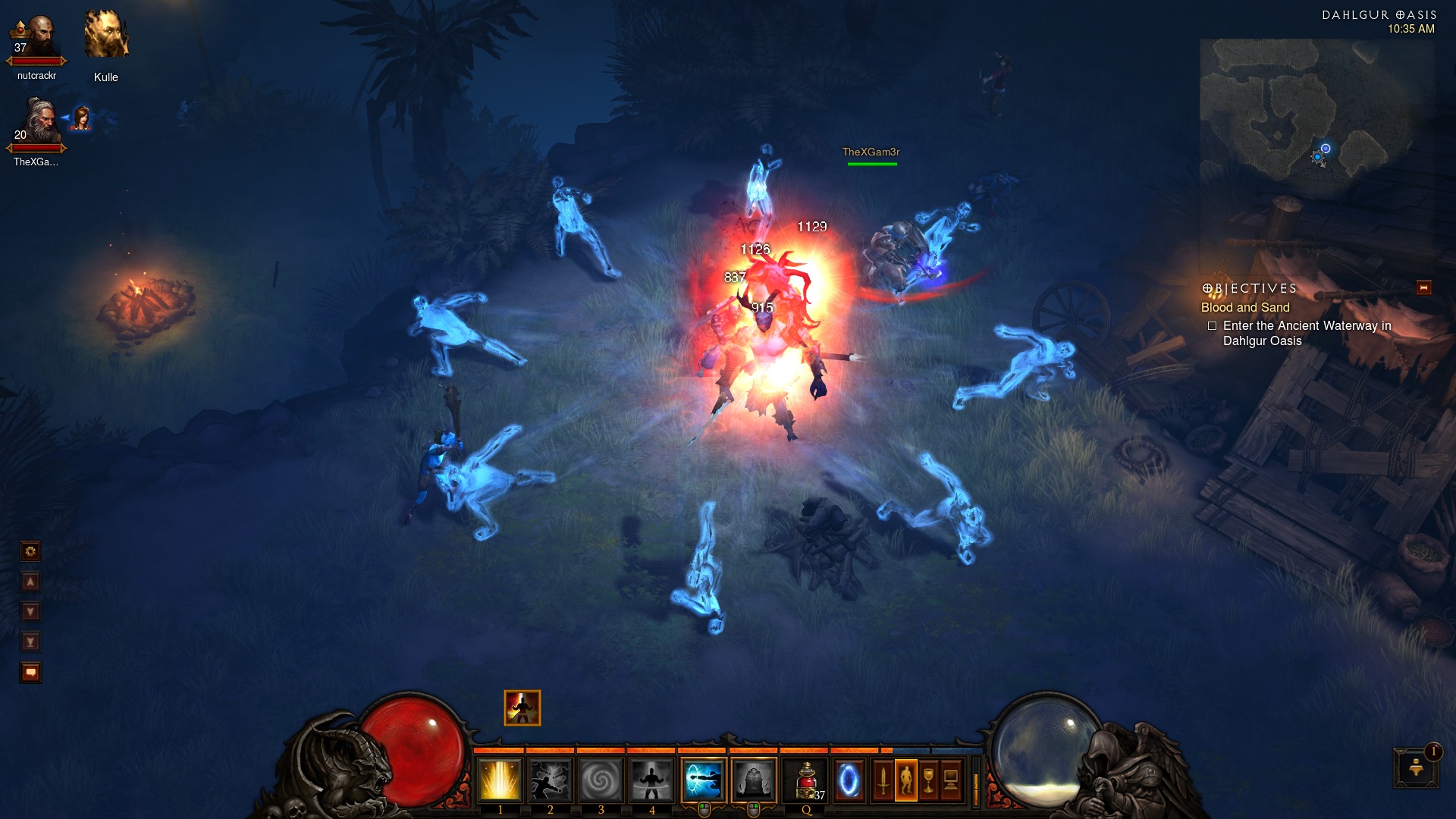
Powerful attacks can produce some interesting visual effects
Monk was my class of choice and he excels at fast, powerful strikes as well as mantras (auras) that aid allies. With no Paladin the choice came down to him or the brutish Barbarian. The Monk, fuelled by spirit gained after each strike, has skills that involve fists and kicks. He has area attacks, like being able to suck enemies towards him in a Cyclone and then perform a kick to knock them back. Multiple punches produce spirit for heavy hitting attacks. There are a few powerful attacks but they never felt distinct. Some Rune unlocks, like a directional fire kick, proved extremely ineffective during battle. Despite being able to swap skills at any time, I was drawn back to a specific selection every time. For a game that touts a huge combination of skills, it didn’t really feel like it.
Diablo 3 requires players to be online at all times. Occasionally there is noticeable lag in single player which hinders combat. Lag spikes result in delays when using skills, dropping items or healing. I gradually got used to 200 – 400 pings from Australia, waiting briefly for treasure drops and pre-empting some healing. After you notice these network intrusions it will be hard to fully enjoy the experience. It isn’t pleasant when your character warps half way across your screen or fails to attack at crucial moments. The problem is not noticeable all the time but for those in remote locations consider it a warning. [Ed. It hasn’t been much better for our editors in North America and elsewhere] The always online component hurts solo players in an effort to stamp out piracy.
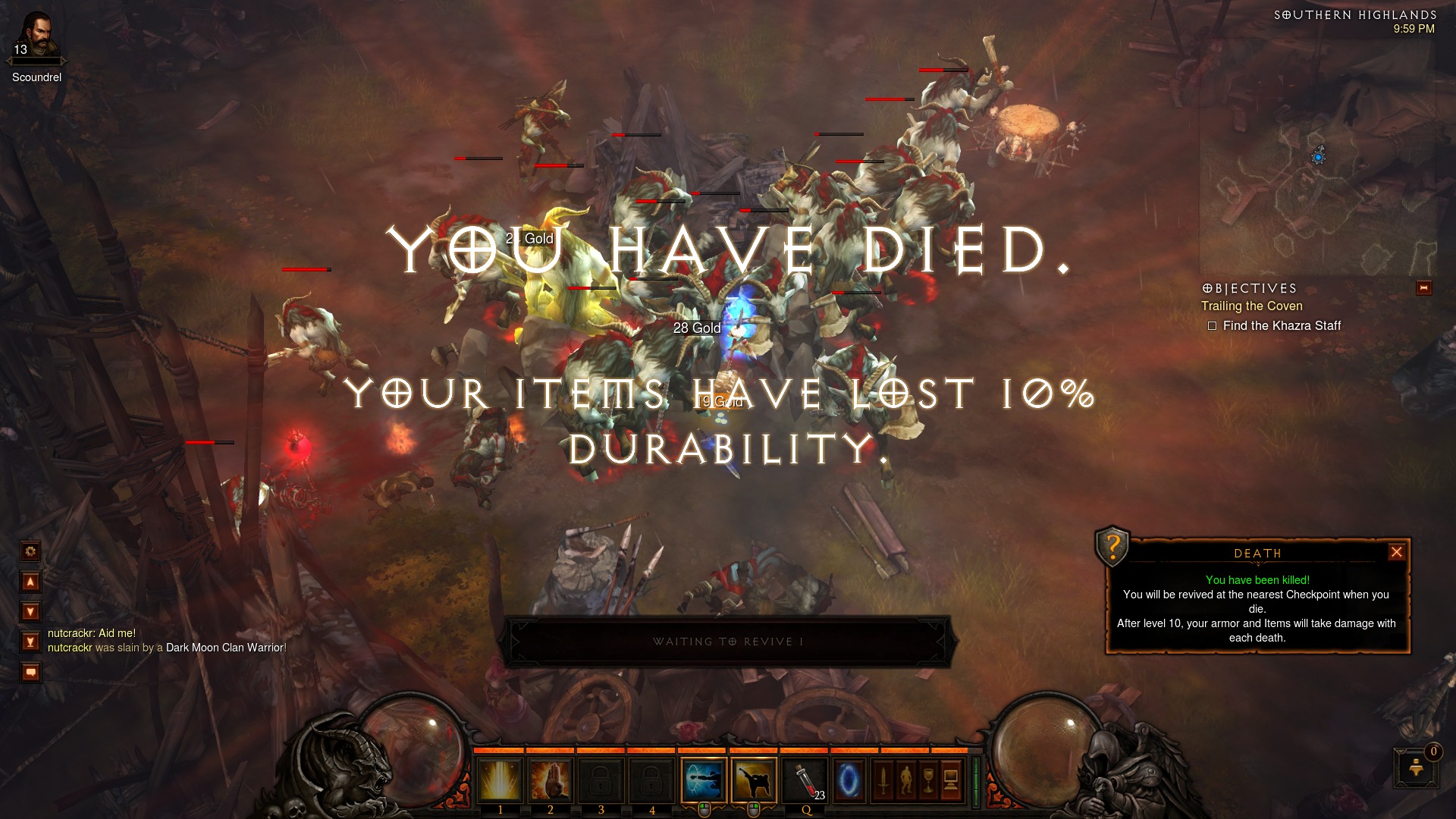
Died? Now you can blame lag in single player too
You don’t have to fight evil alone. You can play with real people online or use AI followers. The three followers have unique personalities with verbal quips that minimized the stagnation when you reach a dead end in a dungeon. The Scoundrel is a funny thief who attacks from a distance with arrows. The Enchantress expels magic and her odd admiration of you keeps her interesting. These followers, and other story characters, can be prompted to answer questions for back story. The lore from characters and books is usually worth listening to and more can be found during subsequent play throughs. The follower AI is good enough to avoid damage and stay out of your way but multiplayer is where you will find real longevity.
It’s effortless to transition from playing solo to playing with friends or just joining a random public game. Minions grow stronger as player counts increase and each character has their own loot. Bosses and champion monsters are very difficult when you play the higher difficulties with four people. It’s enjoyable to play with lower level characters too. You’ll still get XP from completing quests and performing satisfying multi-kills. The huge array of achievements brings continuous progression and more reason to replay areas. A wide range of skills become viable when you take on lower ranked minions. Adventuring with friends and sharing the spoils of war is almost therapeutic and minutes can quickly become hours. The multiplayer produces exceptional replay value.
Diablo 3 looks fine but is not without visual disappointments. Monsters and their animations are great, crumbling upon death or shuffling toward you dragging an axe over stone. Exaggerated ragdoll effects hurl body parts and blood across your screen. Dungeons and caves are suitably atmospheric with seamless random level generation. It only takes one glance at the Halls of Agony in Act 1 to realise there is plenty of gore. The low polygon class designs don’t feel quite right in comparison. The wearable items are over stylized with accentuated features that don’t look practical. The world is fully 3D but you are stuck with one camera angle and two zoom levels. Enemies can be obstructed behind walls as you stand in doorways. The visual quality is generally consistent but the story falls flat toward the end.
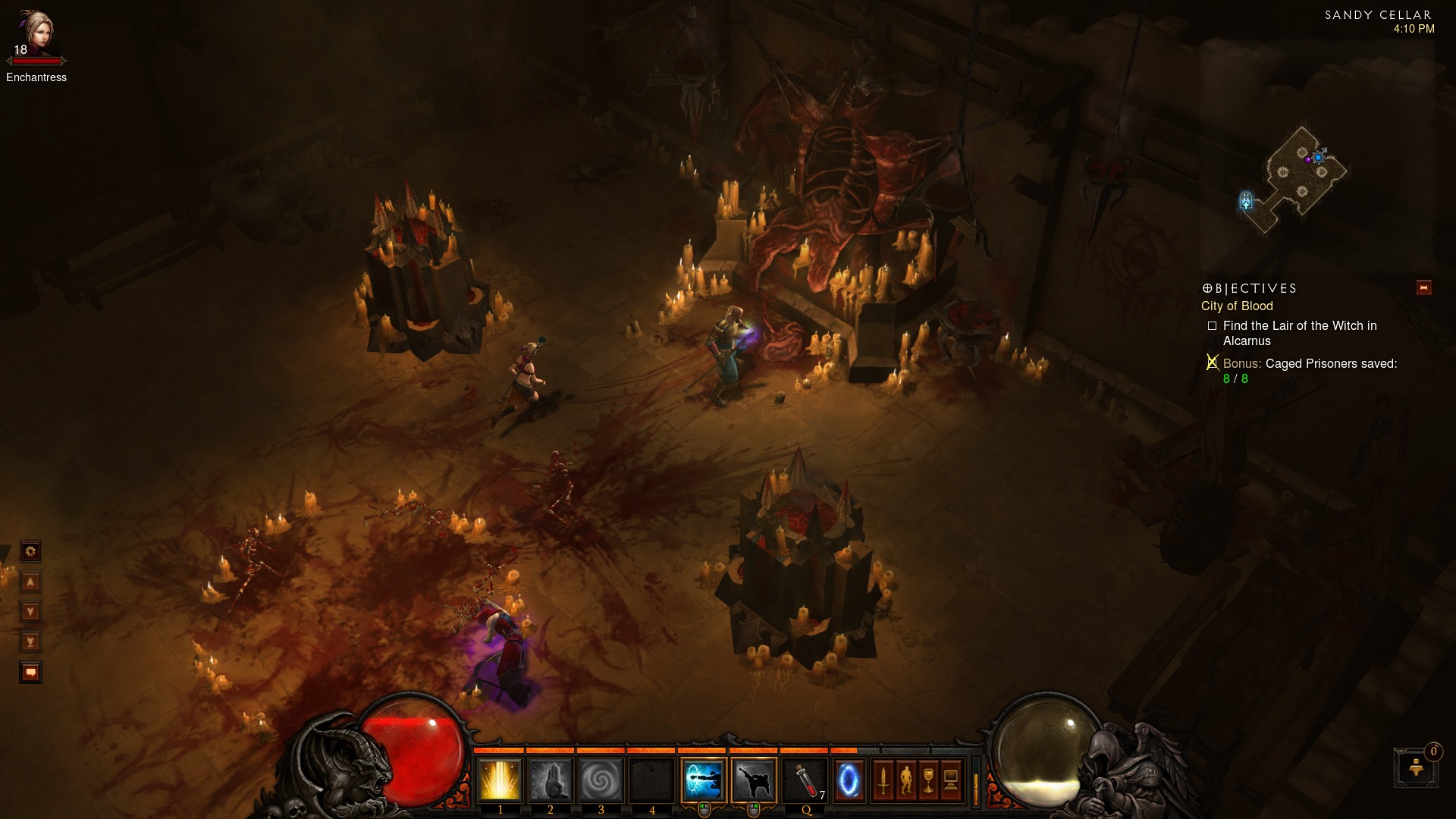
There is plenty of gore and many dark rituals
The main story arc finishes without the punch of its prequels. Major events happen within the game engine, producing less than desirable results. It also tends to have a flippant attitude in regards to major and returning characters. The carefully placed loose ends lack the intrigue they are usually accompanied with. When the last foe falls, the game asks if you want to quit to the menu and you are treated with an ordinary cinematic and the longest of all credits. Despite the healthy nostalgia during the later acts, it lacks the same demonic impact its predecessors generated. Blizzard was happy to reproduce their efforts because it has worked for so long.
Diablo 3 is a good game because it doesn’t stray far from the successful gameplay we saw ten years ago. It’s certainly not a dramatic upgrade or expansion on the classic formula and occasionally lacks the passion the previous games were built on. Changes made to skill and health system don’t seem to bring about improvements. That doesn’t mean there isn’t a lot of fun to be had. Searching for treasure in the myriad of randomized dungeons will be more than enough for most gamers. The action feels great and progression system proves effective. The addictive qualities of the franchise survive and exploring with friends will provide many hours of entertainment.
